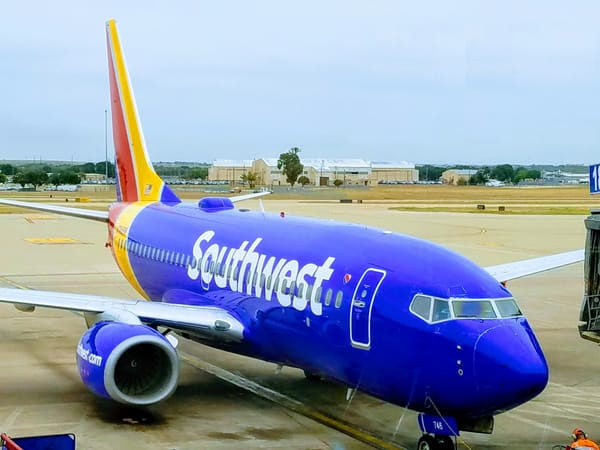Mardi Gras World in New Orleans: Where the Good Times Roll One Float at a Time
Explore Mardi Gras World in New Orleans, a vibrant hub for float creation, offering tours that reveal the art and history behind the Carnival magic.
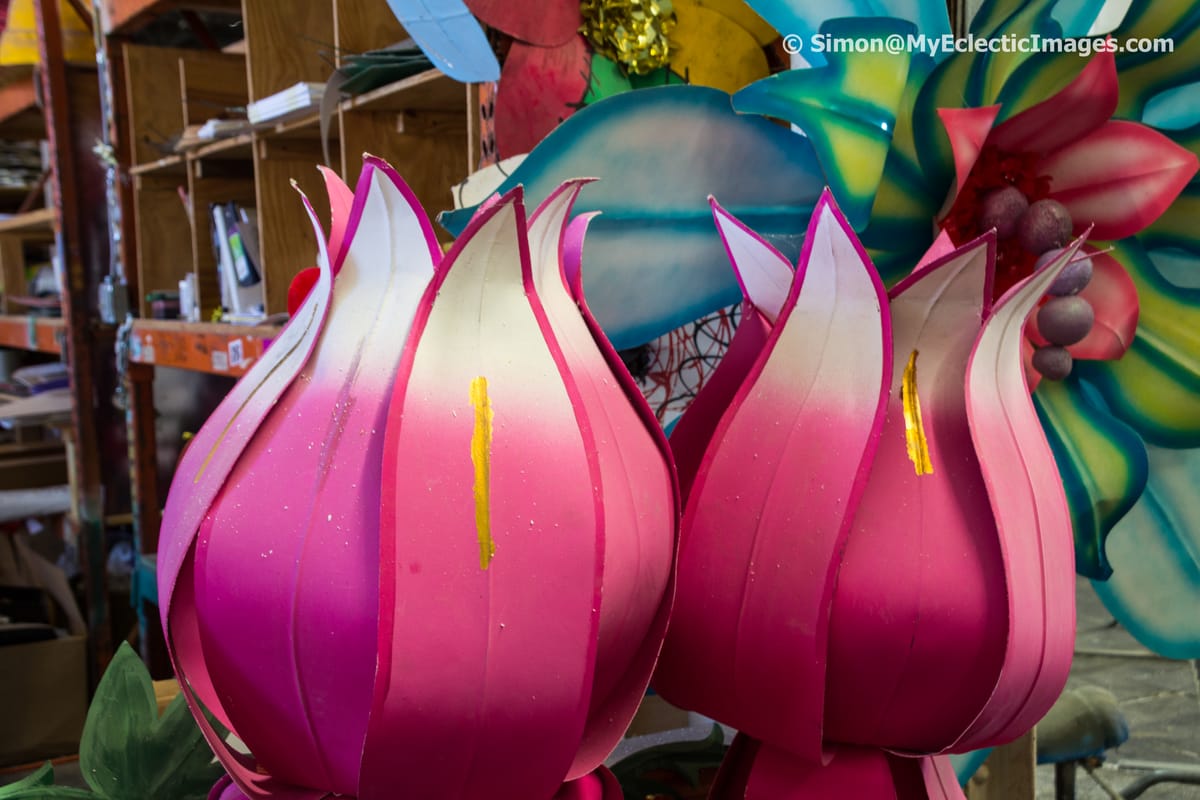
Whether you’re in New Orleans for Mardi Gras or not, a visit to Mardi Gras World will put you in the Carnival spirit. At this colossal 300,000 square foot location, the floats for all 50 plus Mardi Gras parades are created and crafted to play their starring role in the city’s most famous event.
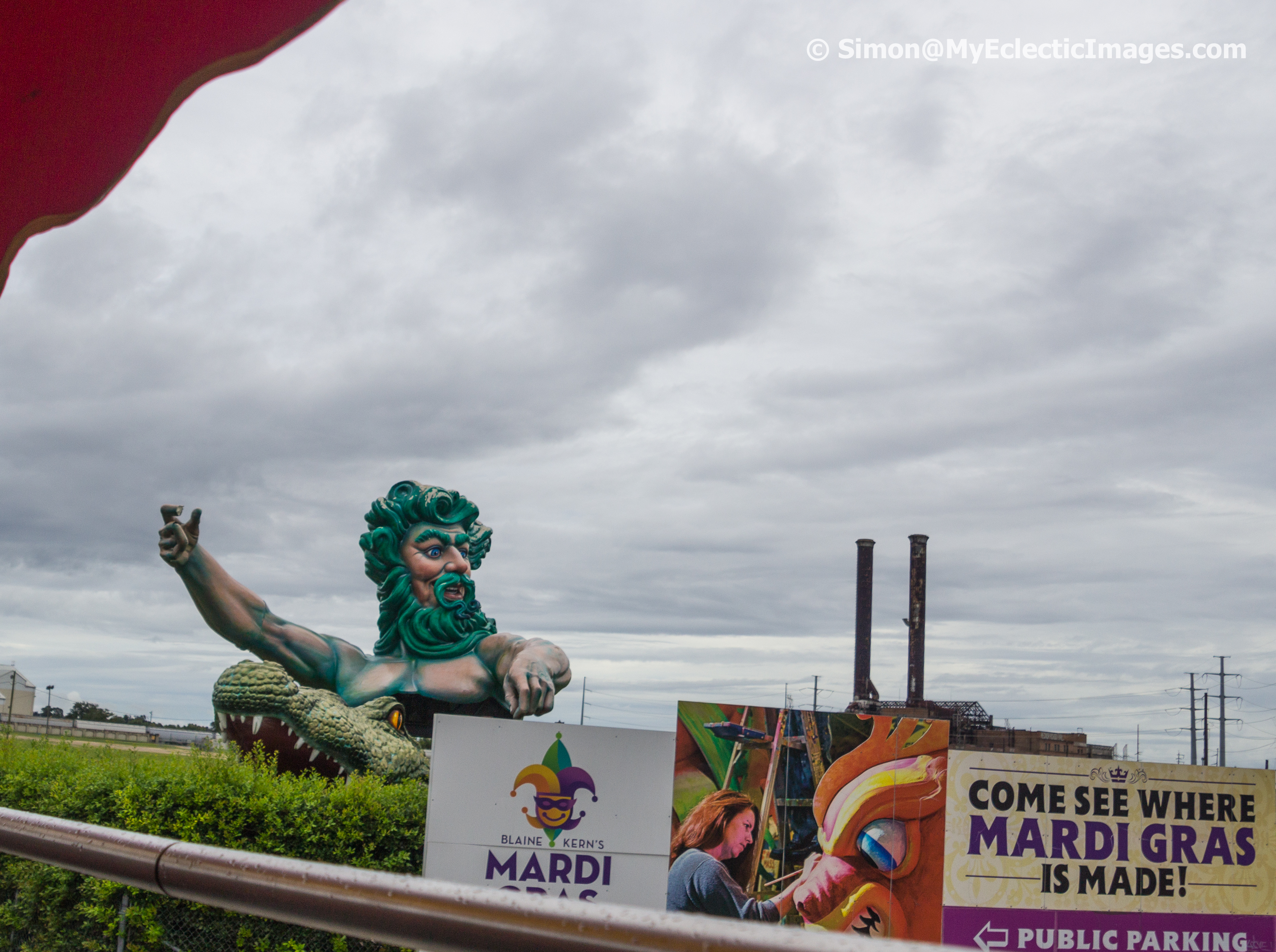
Your tour begins with a short film outlining the history and process used to produce those magnificent Mardi Gras floats. Next, you’re treated to a slice of King Cake, a traditional yeast cake, frosted with the official Mardi Gras colors: purple for justice, green for faith and gold for power. Then, it’s time to get down to the business of how Mardi Gras magic is made.
The Prop-Making Process
A personable, knowledgeable guide ushers you into the warehouse where the figures adorning the floats, known as props, are manufactured. This is the main workshop – the largest provider of custom props in the world. Here artists and architects produce props for all the Mardi Gras parades, as well as for Universal Studios, Disney, Chik-fil-a and other major entities.
As soon as Mardi Gras is over, the themes for next year’s floats are selected, and the production teams swing into action. A series of sketches for each float are drawn, and presented for final approval.
The first step in creating a new prop is to cement slabs of Styrofoam together to form a single large block. Then the artists go to work, using an assortment of knives and saws to carve out the prop. These artists also recycle used props by re-carving them into new shapes.
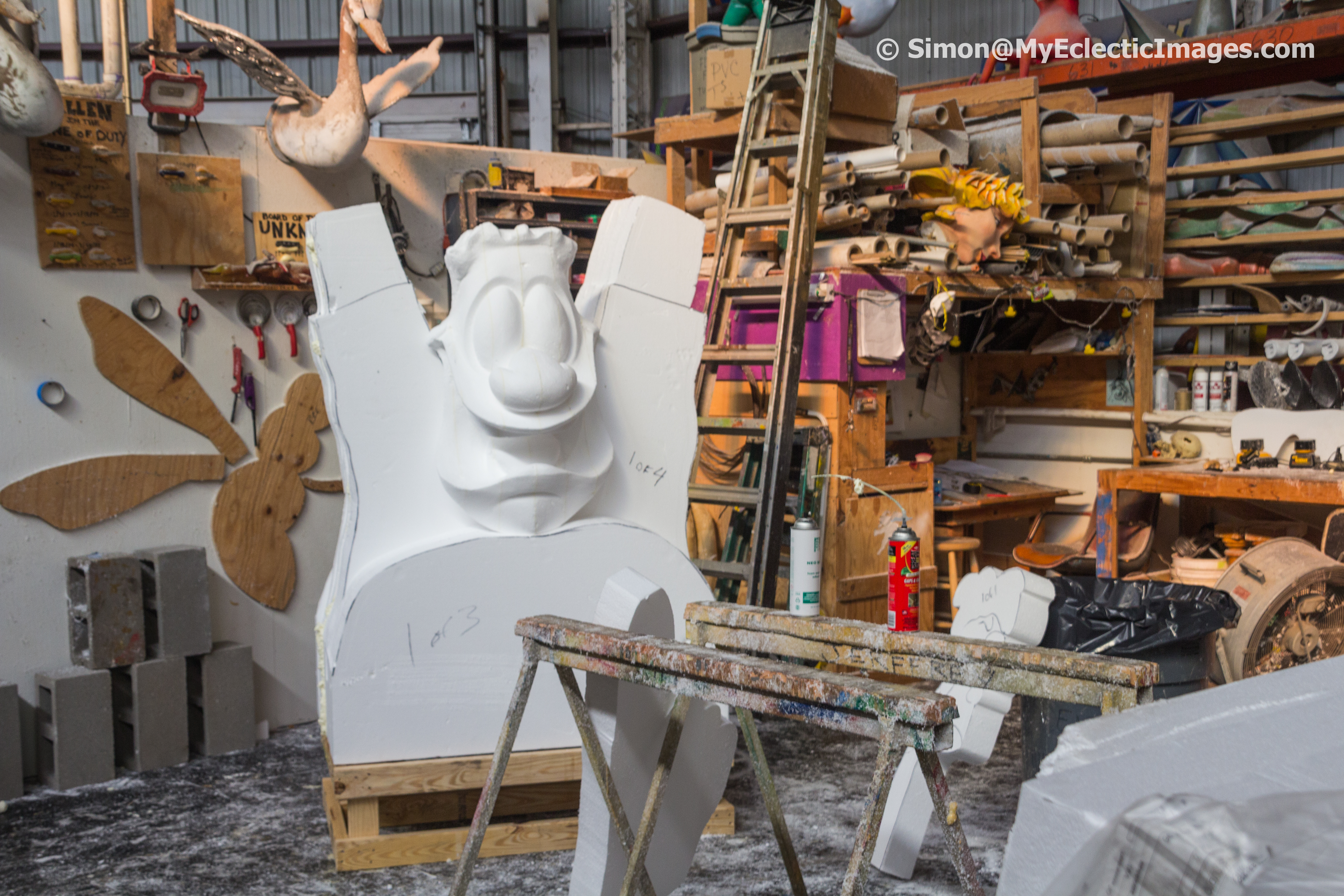
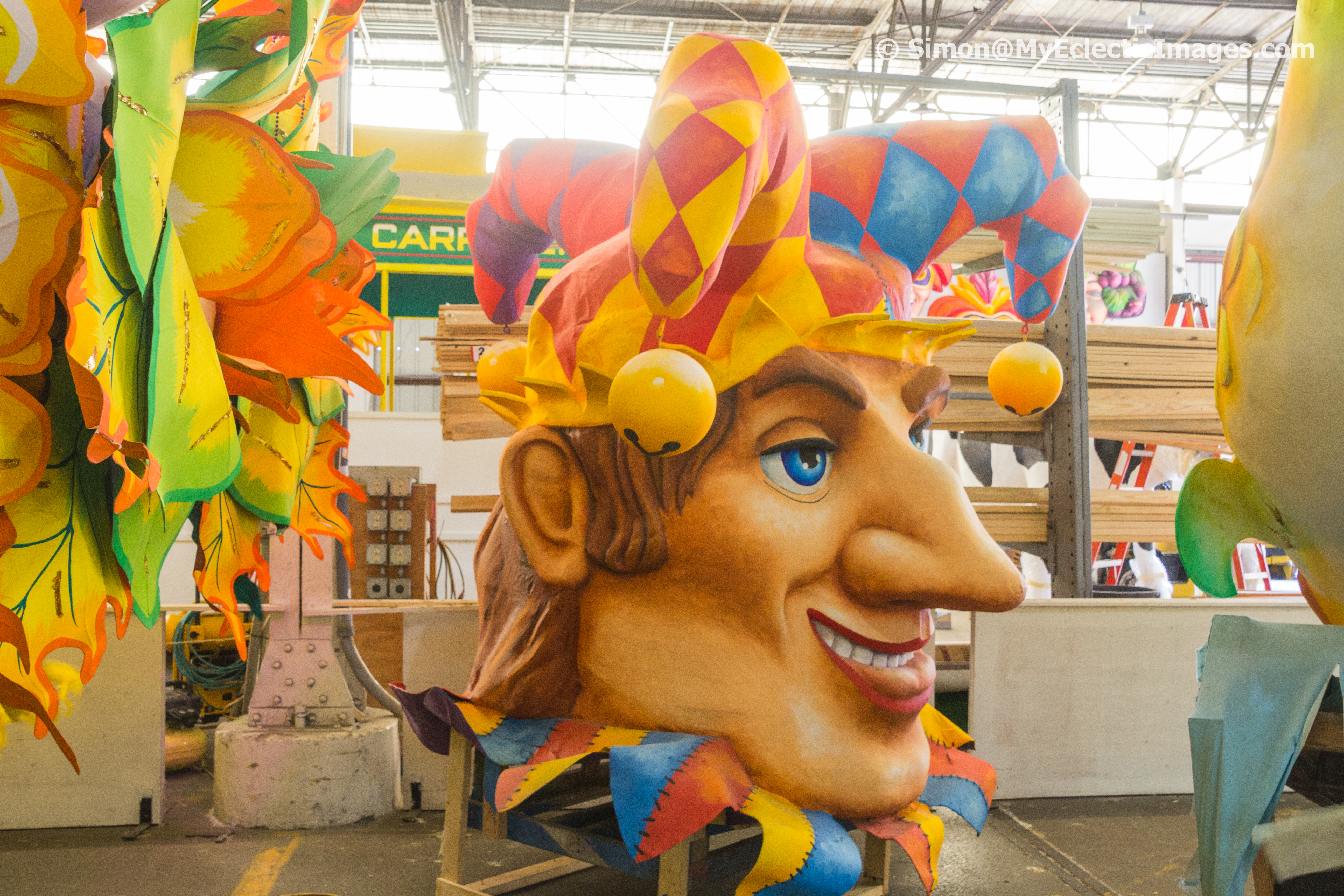
The next team covers the Styrofoam with Paper Mache to make the surface smooth enough for painting and decorating. Once the paper Mache has dried and hardened, the afore-mentioned final decorative touches are added, and the prop is ready for its designated float.
Floats are decorated with larger-than-life flowers, and Mardi Gras World has an entire station dedicated to fabricating these colorful blooms.

Whatever you do, be sure not to miss the prop of Jazz great, Louis Armstrong, immortalized in styrofoam, paper mache and paint. A timeless tribute to a beloved New Orleans icon.
The Floats
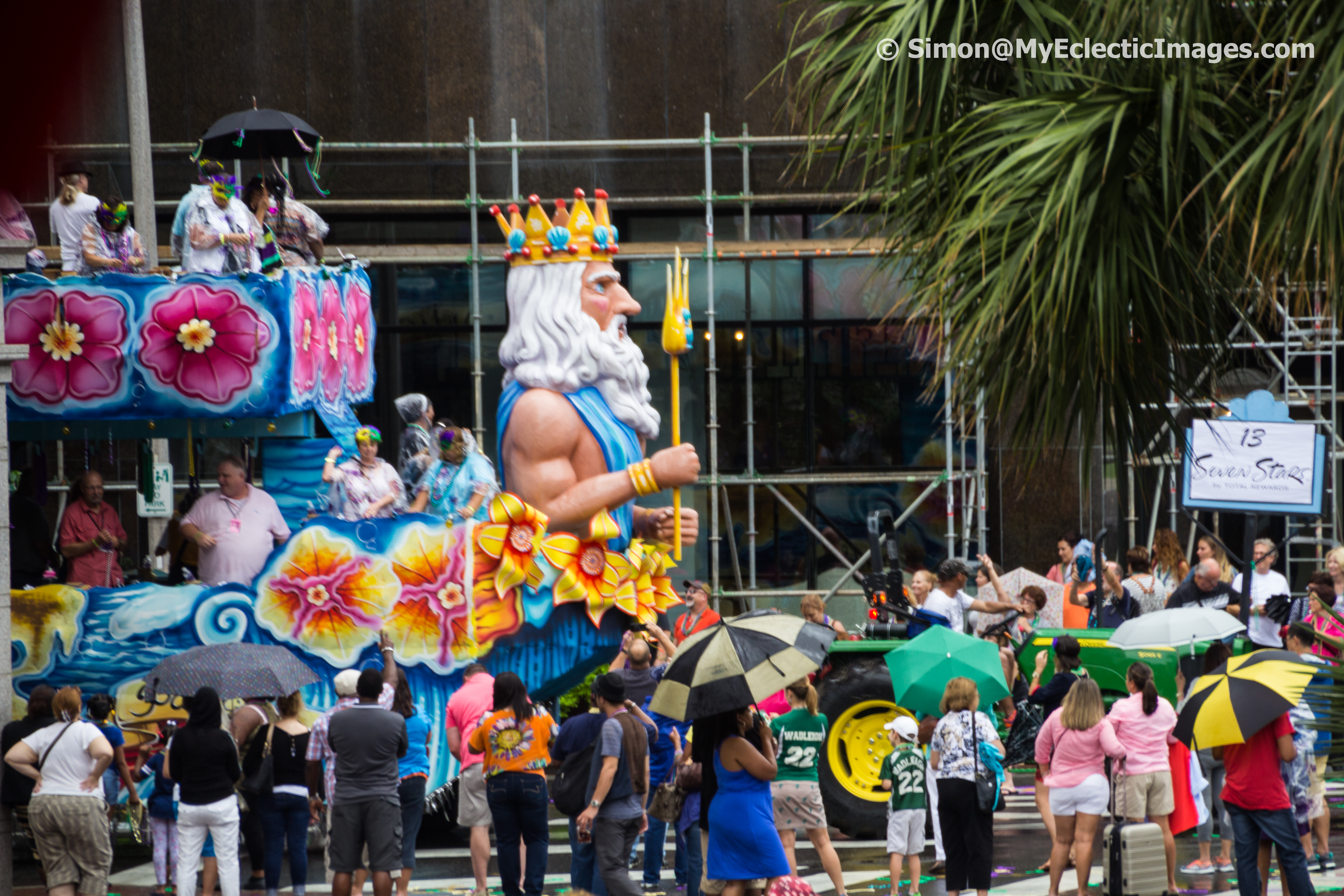
What’s 18 feet tall, and comes in a variety of sizes, colors and designs? A New Orleans Mardi Gras float, of course. Rolling on solid tires, and pulled by tractors, also on solid tires, these imaginatively decorated floats will be sure not to succumb to a flat at the worst possible moment.
The men and women in and on the floats are called Krewe, and work six to eight hour shifts. They bring their own food and drinks, and use built-in bathrooms onboard. They pay 1,000 in annual dues, which do not include the “Throws” – millions of cups, doubloons and beads – which range from $3,000 to $7,000. Also not included are the costumes costing another $100 to $500. Putting a float in a Mardi Gras parade isn’t for the budget conscious.
Much of the funding for the floats is generated through mammoth fundraising balls at venues such as the Morial Convention Center and the Super Dome. These traditional masquerade balls date back to the 1700’s. As many as 16,000 attendees pay $250 per ticket. And, depending on the location of the ball, they may be treated to a float rolling in to join the party.
Mardi Gras festivities take place over 11 days. The Merriments Parade is held on Fat Tuesday, but there are numerous parades to enjoy both before and after that date. Approximately 500 floats in all participate in Mardi Gras, which brings in approximately one billion dollars in revenue for the City of New Orleans.
The History
It all began with Blaine Kern, Sr., who founded Blaine Kern Artists in 1932. He was born into a family of float builders, so you could say it was in his blood. But he didn’t begin creating floats until after WWII. A krewe captain for, Alla, was so impressed with one of Kern’s mural, he hired him to create future floats for the Krewe.
That was the push Kern needed. He traveled to Europe to learn more float building techniques, and his business took off. Kern soon earned an international reputation, and made float building an art form.
Both Kern sons are now guiding the business, which stretches far beyond New Orleans. The Kerns’ floats can be seen in parades in Las Vegas, Mobile, Galveston, Montreal. They can also be seen at the Universal Studios Mardi Gras parade.
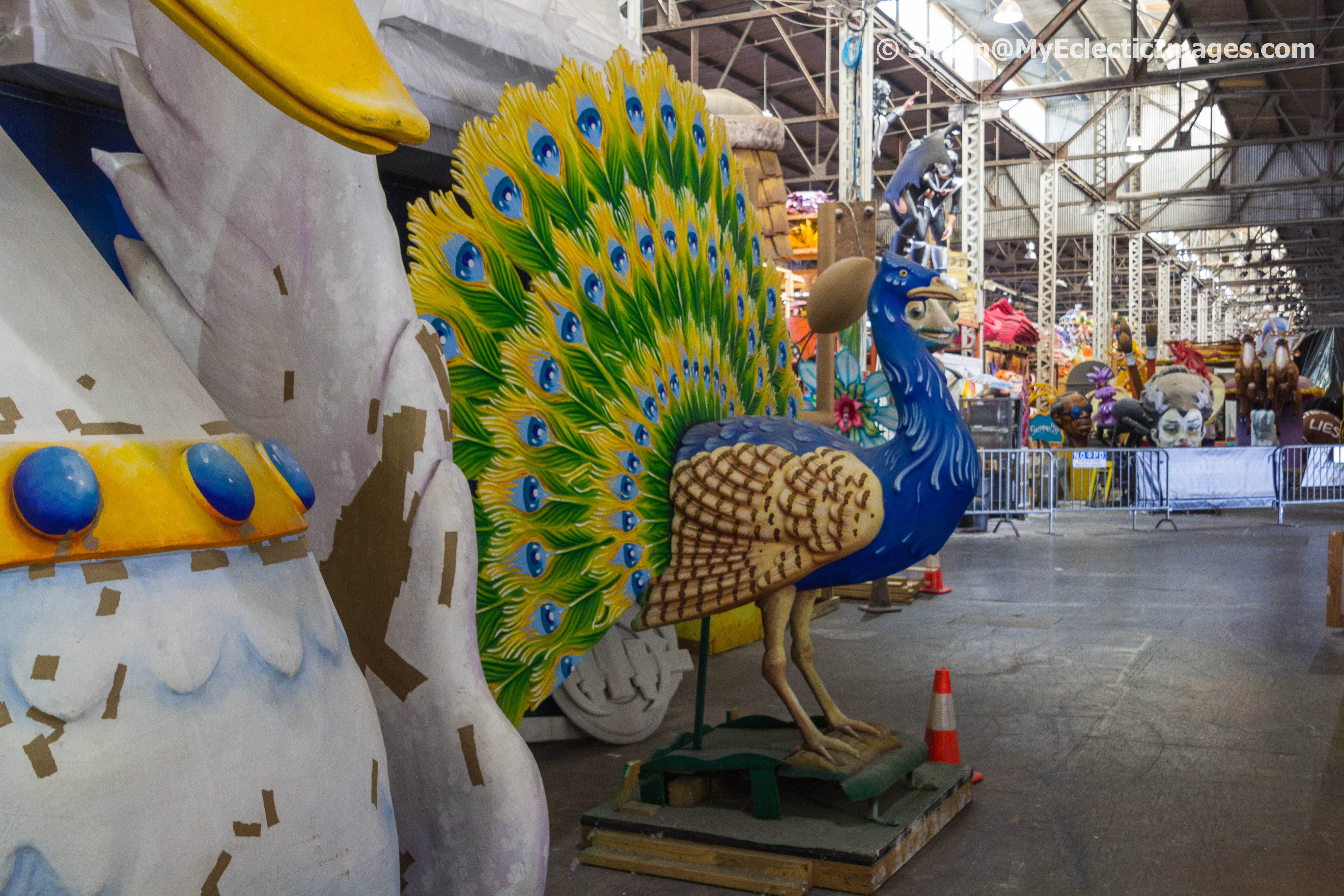
Mardi Gras World opened as an 80,000 square foot tourist attraction in 1984. Its purpose was to give visitors a behind-the-scenes peek at how Mardi Gras floats are created from the Styrofoam up.
Mardi Gras World was such a success, the venue tripled in size to its current 300,000 square footage in the early 2000s. This facility houses a large Events area for weddings, proms and corporate events.
Mardi Gras World is the primary location where the floats are created and built. However, New Orleans is home to a total of 13 warehouses full of floats. Two additional warehouses are located in Orlando and Spain.
Today, Mardi Gras World is an ideal venue for a family outing. Following your tour, you can try on costumes and take each other’s pictures in front of a float or next to a prop. At Mardi Gras World, it’s Carnival time every day of the year.
If You Go to Mardi Gras World
One-hour tours are available daily, beginning at 9:30 AM, with the last tour at 4:30 PM. Tours run every 30 minutes.
A complimentary shuttle service is included in the ticket price. Pickups are available from 20 convenient downtown New Orleans locations
Mardi Gras World
1380 Port of New Orleans Place
New Orleans, LA 70130
Phone: 504-361-7821
You can find more information and ticket prices on the Mardi Gras World website.
Disclaimer: Our visit to New Orleans was hosted by New Orleans Convention and Visitors Bureau. However, all opinions, as always, are entirely my own.



